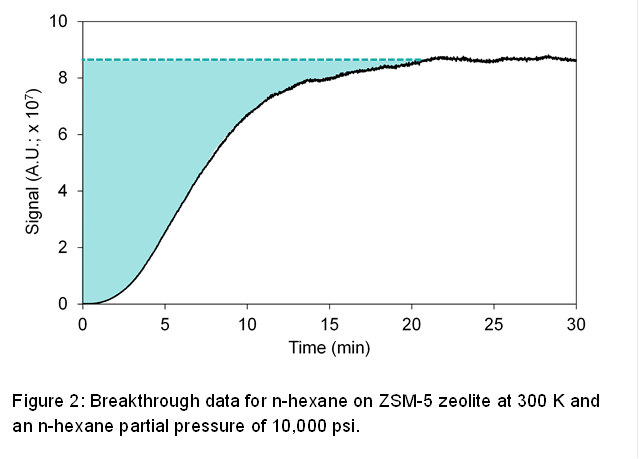Reports: DNI553488-DNI5: Effects of Mixture Adsorbates on Zeolite Unit Cell Dimensions
Stephanie G. Wettstein, PhD, Montana State University (Bozeman)
This work focuses on determining the effect of binary mixture adsorption on the adsorption capacity of zeolites. The goal of this research is to determine effect multiple adsorbates have on the zeolite structure using zeolite membranes to determine which molecules expand and contract the zeolite structure. Over the previous year, the experimental system was built and the adsorption of single adsorbates on ZSM-5 zeolite was determined and compared to literature values.

In the previous report a schematic of the equipment system was shown (Fig. 1), which was built and is now operational. Powdered zeolites are packed in a tube where the membrane module is shown and break-through experiments have been run.
Due to pressure drops across the powder, vapors such as i-butane condensed in the line. A mixture of silica chips and zeolite powder eliminate the pressure drop, but lead to lower molecule per unit cell adsorption values than what has been reported in the literature for a given temperature and vapor partial pressure. Current work is focusing on determining if the adsorption is mass transfer limited or if something in the system is leading to low reproducibility and adsorption. For example, Figure 2 shows the breakthrough data of n-hexane at a partial pressure of 10,000 psi and 300 K. The molecules adsorbed per unit cell of zeolite should be 8, but empirically only 2.45 m.u.c. are adsorbed.
This next year will focus on ensuring accurate adsorption measurements in order to perform mixture adsorption experiments. Additionally, zeolite membranes will also be used to gauge the expansion and contraction of the zeolite unit cell.
A graduate student and a female undergraduate were supported through this work. Additionally, the graduate student attended the 2015 ACS regional meeting and travelled to meet with collaborators at the University of Colorado – Boulder to see alternative experimental equipment and the Colorado School of Mines to get an overview on zeolite synthesis methods.












